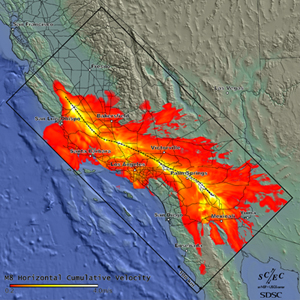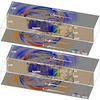Difference between revisions of "Main Page"
(→Most Recent News) |
(→Most Recent News) |
||
| Line 51: | Line 51: | ||
<br /> | <br /> | ||
| − | [[Image: | + | [[Image:Fault.png|100x100px|left|link=]] |
* '''[https://www.nics.tennessee.edu/san-andreas Research Shows a Way Forward in Making Earthquake Scenarios More Accurate]''' - SDSC computational scientist Dr. Roten performed ShakeOut simulations with San Andreas fault zone plasticity on Kraken at the National Institute for Computational Sciences (NICS). His study suggest that the nonlinear behavior in rocks could reduce the previous simulation-based estimates of expected ground motion velocity in the Los Angeles basin during a magnitude-7.8 event on the southern San Andreas Fault by 30 to 70 percent. NICS News, May 13, 2014. | * '''[https://www.nics.tennessee.edu/san-andreas Research Shows a Way Forward in Making Earthquake Scenarios More Accurate]''' - SDSC computational scientist Dr. Roten performed ShakeOut simulations with San Andreas fault zone plasticity on Kraken at the National Institute for Computational Sciences (NICS). His study suggest that the nonlinear behavior in rocks could reduce the previous simulation-based estimates of expected ground motion velocity in the Los Angeles basin during a magnitude-7.8 event on the southern San Andreas Fault by 30 to 70 percent. NICS News, May 13, 2014. | ||
Revision as of 14:25, 10 March 2016
Home The High Performance GeoComputing Lab (HPGeoC) at San Diego Supercomputer Center, University of California at San Diego, is conducting research and development in high performance computing, data intensive computing, and grid computing to support geoscience applications, with particular emphasis on computational seismology. HPGeoC is in collaboration with Southern California Earthquake Center (SCEC) and other academic, industrial, and national lab partners to develop state-of-the-art techniques and applications supporting petascale earthquake computing.
Most Recent News



|